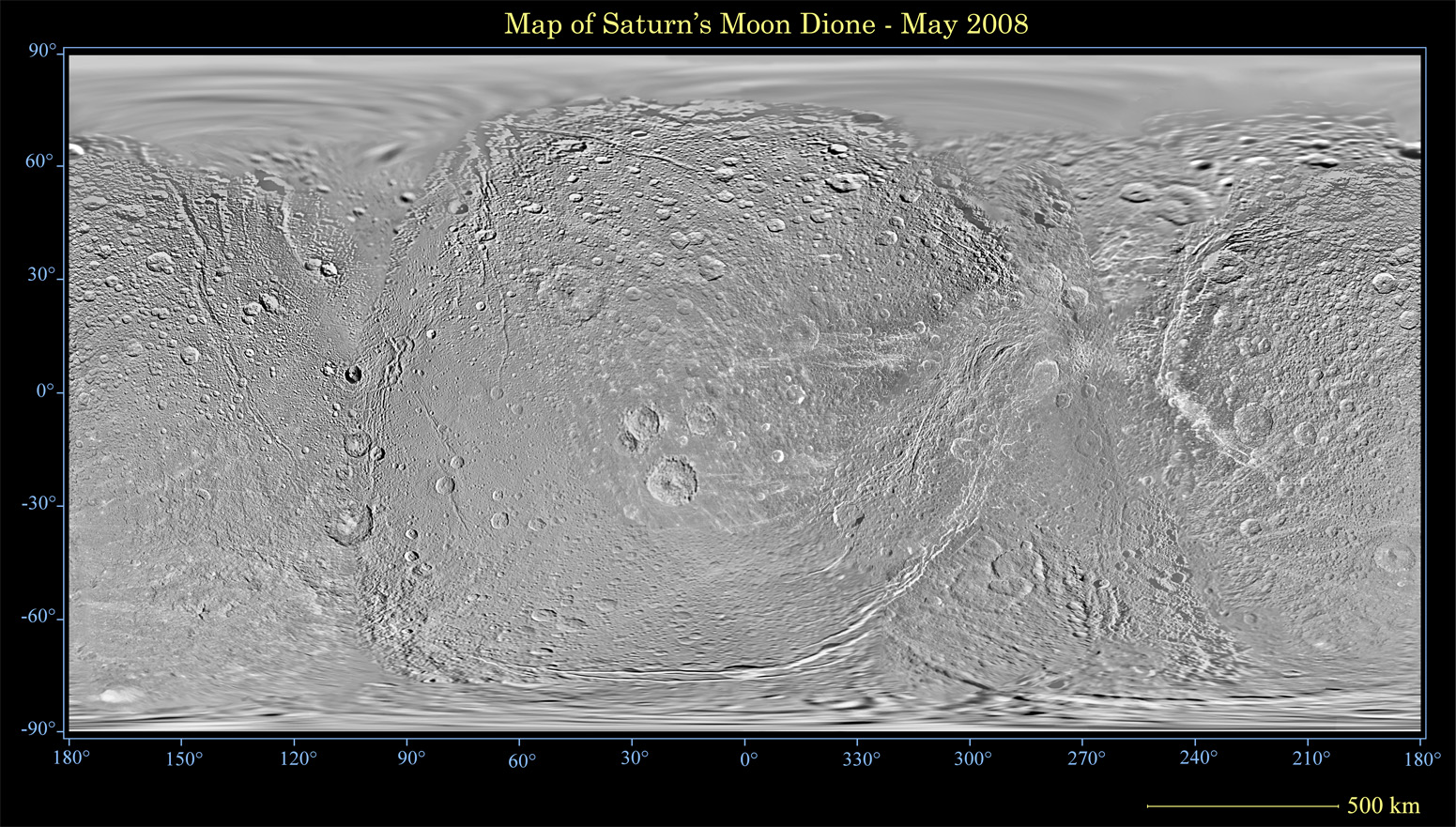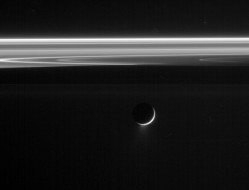Every year my car insurance company provides a free road atlas that helps me get where I need to go. Now, the imaging team from the Cassini spacecraft is ensuring that future travelers will be able to find their way around Saturn’s icy moons by providing detailed atlases of the surface features of these remote satellites. The Cassini Imaging Team just released the third in a series of atlases, this one charting the fractured, 1,125 kilometer-wide Dione. To do this, they stitched together 449 high resolution images of the moon to produce a global map. These atlases are being released simultaneously to the public and the scientific community, available with just a click or two of your mouse. So, get your free atlases here!
The atlases can be found at the CICLOPS website (Cassini Imaging Central Laboratory for Operations.) And while you’re getting your free atlas, browse around for other amazing (and free) images of the Saturn system, such as this sensational image of Enceladus backdropped with Saturn’s rings:
The Cassini imaging team previously released atlases of the geologically active Enceladus and the obscure outer moon Phoebe. Atlases of other moons will be released as Cassini’s mission continues, with Iapetus and Tethys next in line.
For Dione, the atlas was produced at a scale of 1:1,000,000, where 1 inch on the map is one million inches, or almost 26 kilometers on the surface of the moon.
These maps will help planetary scientists study these worlds, serving as a basis for geologic interpretations, and help estimate the ages of surface regions, and aid in deciphering the processes that formed the moons’ landscapes. But most importantly, with their accurate calculation of latitude and longitude, these maps allow scientists to easily find, and refer to, features of interest on the moons’ surfaces.
While Cassini has not been able to image every portion of the surfaces of Saturn’s moons, the Imaging Team has been able to combine images from the Voyager mission to help fill in any voids in Cassini data.
Now that they atlases are being assembled, the next task for the Cassini scientists will be to name the features on the moons. This is usually done using names and locations from various mythologies from different cultures. Features from Dione will be named from Virgil’s “Aeneid.”
CICLOPS is located at the Space Science Institute in Boulder, Colorado. The lab’s director and Cassini imaging team leader, Carolyn Porco said, “Both robotic and human travelers to Saturn in the future will surely rely on this growing collection of maps and their derivatives to find their way among the moons of Saturn.”
Original news source: CICLOPS



Some planetary scientist, please tell me where the hexagonal craters come from.
aliens made them
Keep up the great work, I love your posts